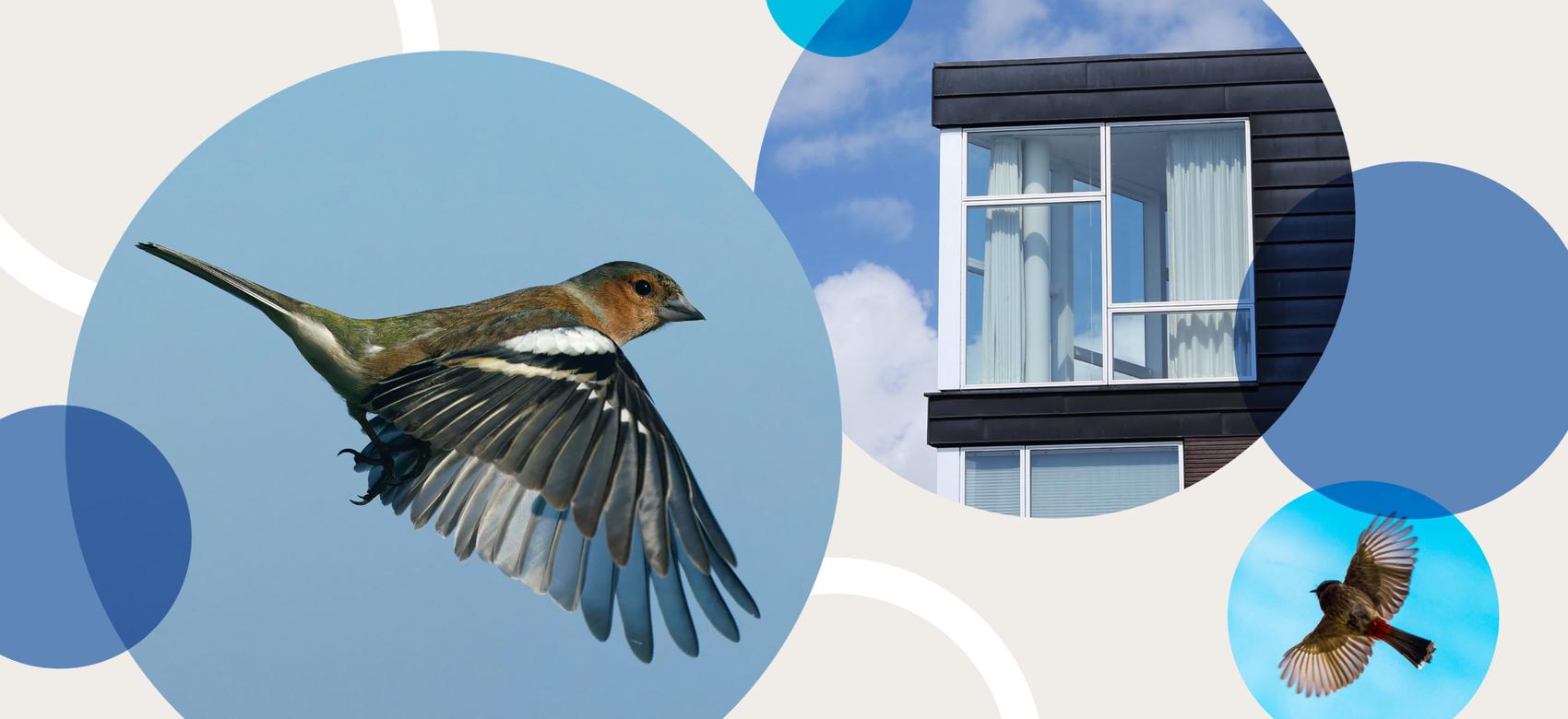Why do birds fly into windows?
By Carolyn Ali

About 16 to 42 million birds die each year in Canada as a result of building window collisions
Architect Penny Martyn — who developed UBC Bird Friendly Design Guidelines for Buildings, along with UBC researchers, students and Environment and Climate Change Canada — explains why this happens.
“Birds see differently from humans,” Martyn says. “They don’t perceive glass as a solid object. To them, it could look like you could fly straight through the glass to the other side. Or, the glass reflects the landscape, sky or water, and it looks like the landscape continues on, so they might fly straight into it.”
It’s not just windows: birds don’t recognize glass on balcony or landscape guardrails either.
Glass corners are particularly hazardous. Just as people are inclined to cut corners by walking across a vacant lot, birds see a clear way across a balcony or patio and then collide with the glass barrier.
Glass that’s near vegetation increases the likelihood of a collision, since birds forage in the vegetation. The gardens and trees attract birds, and the glass reflects the foliage, confusing the birds since they can’t tell the difference. Hence, the chance of a collision is greater around the lower stories of buildings, and to the height of the tallest trees surrounding them.
Martyn adds, many birds don’t necessarily look straight ahead. Their vision is more sideways, and they’re looking for movement, not solid objects. And they fly at a limited range of speeds that are difficult to control, so they may not be able to stop in time to avoid a crash.
Migratory species are especially at risk of building collisions, which happen most often during spring and fall. Vancouver is located along the Pacific Flyway migratory route, while Toronto experiences bird collisions with migratory birds flying across Lake Ontario on the Atlantic and Mississippi Migratory Flyways.
Here’s what you can do to help prevent bird collisions at home
Carolyn Ali is a writer for UBC Brand and Marketing.
Feel free to republish the text of this article, but please follow our guidelines for attribution and seek any necessary permissions before doing so. Please note that images are not included in this blanket licence.


